I’ve started many new garden beds over the years, and you know what? I haven’t dug a thing.
Back in my old garden in California, it actually would’ve been pretty challenging to dig anything, as I started one of my new garden beds in an old bathtub. A bathtub in my backyard!
I inherited this vintage, enameled-steel clawfoot tub from the previous owners after I moved into my house. They had it propped up under the feijoa tree on a stack of stones, and for many summers it was our repurposed party cooler, filled with ice and stuffed with cold beverages.
But having the tub sit empty the rest of the year seemed silly, especially since we weren’t using it as an actual tub to wash anything in the garden.
I envisioned turning it into a planter (especially a future planter for potatoes and sweet potatoes, where the tubers could be contained), but the size made filling what was essentially a very tall raised bed with high-quality soil a little cost-prohibitive, considering we needed to top off all our existing garden beds as well.
So I started looking into no-dig methods for building raised beds—which pile on layers of organic materials that decompose over a season to create humus-rich earth—and settled on a method that’s changed the way I create new beds and make my own soil for the last 10 years.
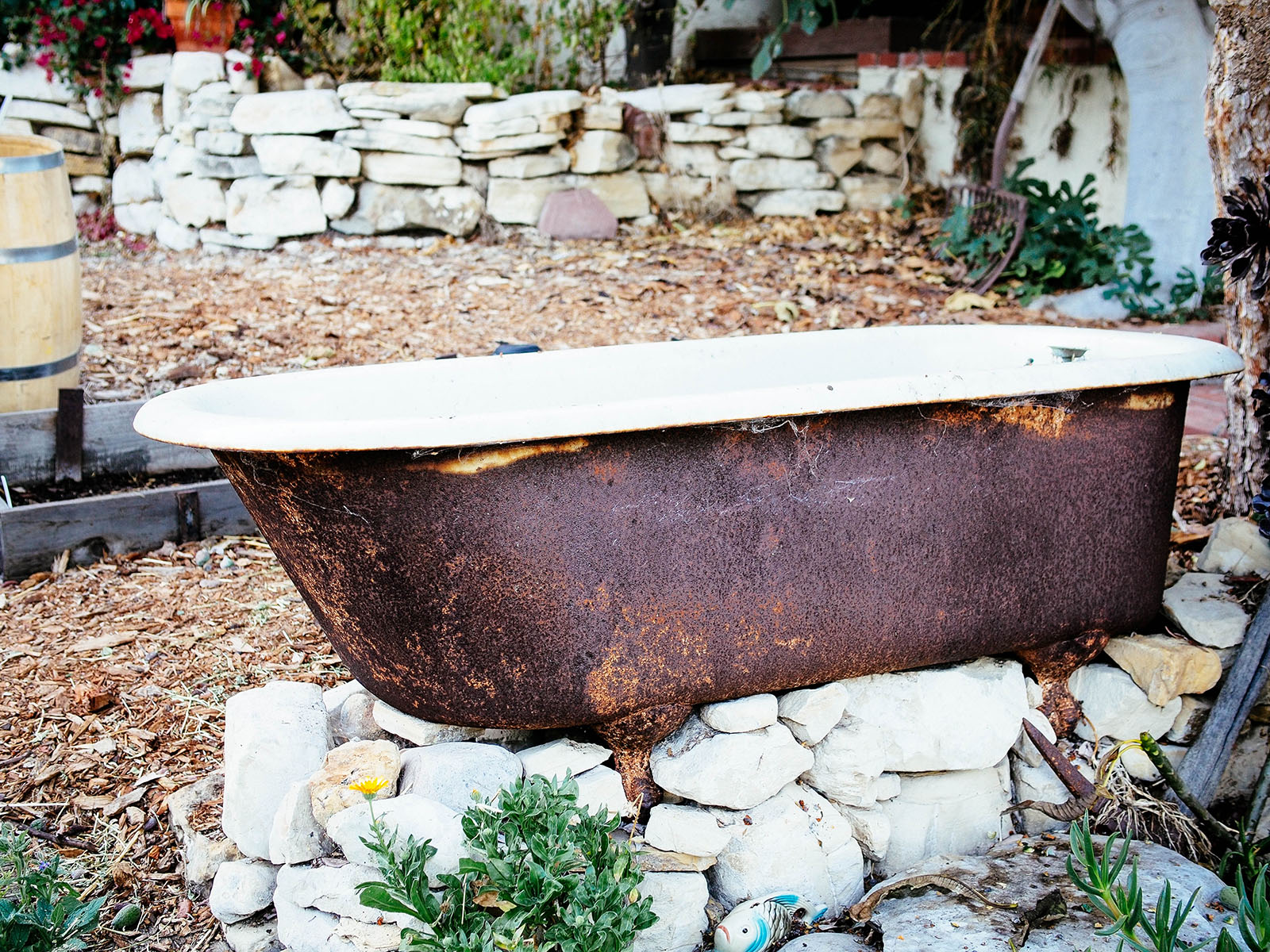
What’s a no-dig garden?
The core of a no-dig garden is disturbing the soil as little as possible.
This is in sharp contrast to traditional methods of gardening, which promote tilling, double digging, turning the soil, or “working” compost into the soil to start a new garden plot. For generations of gardeners, tilling was standard practice for loosening and aerating the soil.
With no-dig gardening, however, you simply layer organic materials (like plant debris or dead woody matter) on top of the soil and let the soil food web break them down and, essentially, do the job of aerating the soil for you.
What happens initially is the plant debris is colonized by bacteria and fungi in the soil. Beneficial microbes begin to convert the plant debris into humus (the rich organic matter you know as compost). More soil-dwelling organisms then carry the humus deeper into the soil where the nutrients can be absorbed by plant roots.
This constant replenishment of nutrient-rich organic matter is Mother Nature’s equivalent of slow-release fertilizer, and it’s the food that keeps the soil food web stable. It allows beneficial microbes and other organisms to multiply and thrive so they can outcompete the bad microbes.
Even if you can’t or don’t always see them, an intricate web of fungi, bacteria, protozoa, nematodes, arthropods, and earthworms are always at work. If you dig, fork, till, or otherwise disturb the soil in some way, you risk killing larger organisms (like beetles and worms) and damaging the ecosystem that your own personal soil food web has been building. This may result in soil compaction, poor drainage, and/or weeds—lots of them.
That’s because digging often brings dormant weed seeds to the surface, where they’ll soak up all that sunshine and water and start sprouting by the dozens or even hundreds.
Now, does the soil food web ever recover if you’ve already tilled the soil? Yes, it does. But when the natural balance is upset, even temporarily, it’s likely to create an opportunity for weeds and pests to take hold while the soil food web works to regain balance.
No-dig vs. no-till gardening
You may have heard the terms “no-till” or “no-till gardening” brought up in agriculture, and wondered how it’s different from no-dig gardening.
There’s actually no difference—no-dig and no-till both refer to the same practice of leaving the soil undisturbed and layering organic matter on top to build up the soil structure and increase soil fertility.
So you can skip all the digging and tilling and start making healthy soil the “lazy” way, as I like to call it.
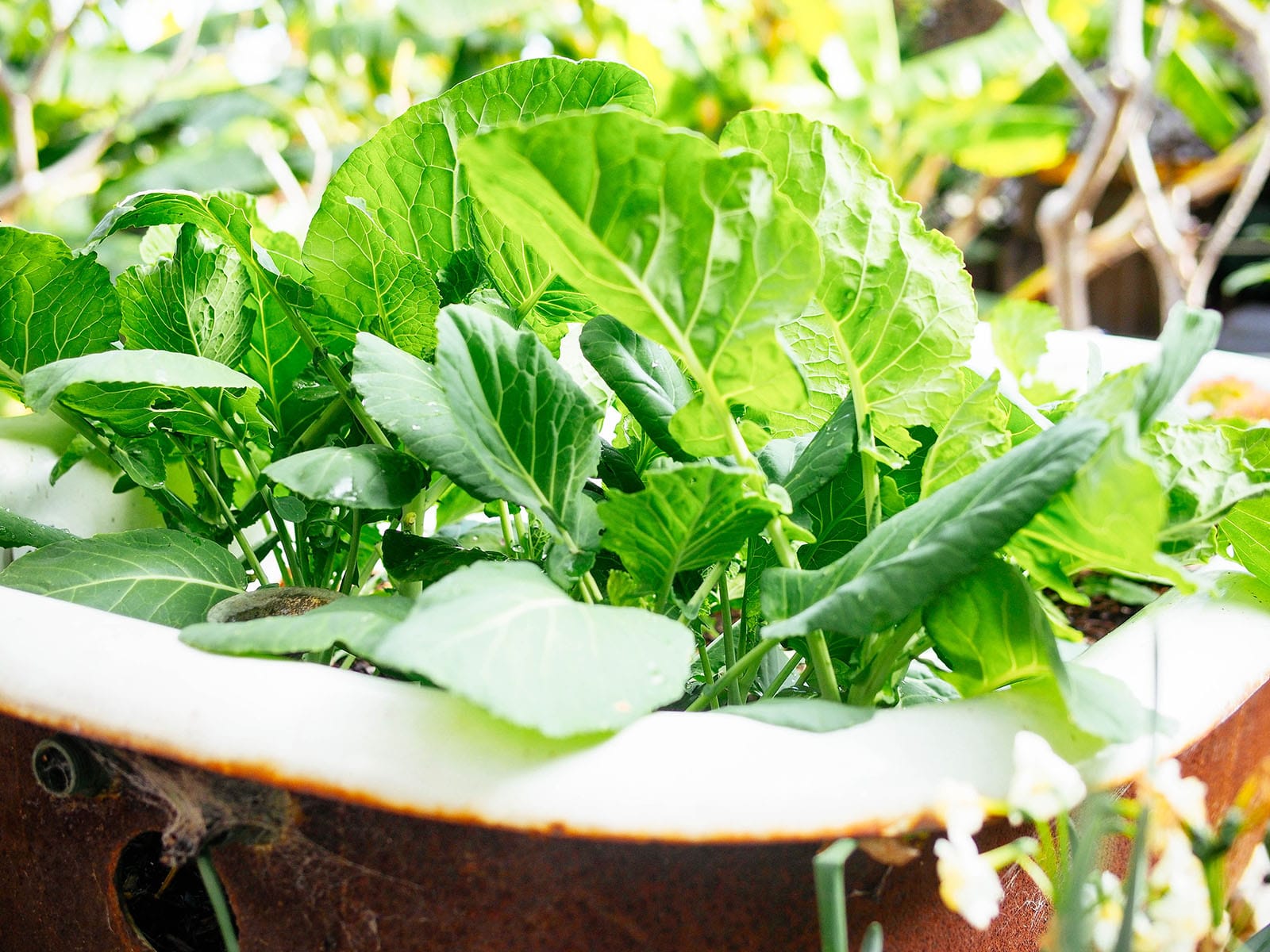
Why no-dig gardening is a better way to go
If you’ve always followed traditional gardening methods and you’re not convinced to give no-dig gardening a go, here are six reasons you should at least try it in just one of your beds this year:
1. No-dig gardens require less maintenance and manual labor.
No-dig gardens require less maintenance because, well, there’s no digging involved! You never eliminate manual tasks completely, of course, but you definitely don’t have to aerate the soil, work in compost, or any of the blisters and back pain that often go along with starting a new bed.
This makes no-dig gardens a great choice for people with physical limitations, or who simply believe in working smarter (not harder).
2. No-dig gardens save you time.
Less time spent on maintenance means more time you can devote to things you actually like doing in the garden, such as designing, planting, harvesting, or simply sitting back and enjoying the view.
Related: A guide on spacing your plants in a garden for maximum production
A lot of what goes into gardening is busy work, and what we’ve been taught to do every season—like forking compost into the soil—simply isn’t necessary in order to have a healthy, productive garden.
3. No-dig gardens need less fertilizer.
No-dig gardening builds soil fertility by layering organic matter on top (essentially mulch). The mulch breaks down and feeds beneficial soil microbes, which in turn feed your plants and help them flourish. This natural cycle reduces the amount of outside fertilizers you actually need to use, as you’re creating your own compost right inside the garden bed.
4. No-dig gardens support healthier plants.
With no-dig gardening, what’s good for the soil is good for the plants too. The lighter, fluffier soil drains excess water while retaining a proper level of moisture, promotes good air circulation, and improves the uptake of nutrients by plant roots, all of which lead to fewer plant diseases and overall healthier plants.
5. No-dig gardens have fewer weeds.
Weeds are present in every garden, but many of their seeds are buried deep in the soil, where they lay dormant until exposed to sunlight. When you dig up the soil, you inevitably bring these seeds to the surface and then provide them with all the light and water they need to germinate and grow.
Leave weed seeds where they belong—deep underground where they can’t come back up!
In a no-dig garden, the few weeds that do sneak through are easy to remove by hand or cut down at soil level, where they can be left in place to decompose (if they haven’t gone to seed) and feed the soil food web.
6. No-dig gardens require less water.
Since no-dig gardening improves the soil structure over time with its use of regular mulching, this increases the soil’s water-holding capacity (in a good way). Your garden needs less water because the roots can grow deep to reach the moisture it needs, and your plants naturally become more drought-tolerant.
Read next: How to water during hot weather and help your plants survive a heat wave
Types of no-dig gardens
There are several types of no-dig gardens, including straw bale gardens, lasagna gardens, hugelkultur, and sheet mulching, and the no-dig gardening method is often associated with organic gardeners like Charles Dowding and Ruth Stout (who each have their own methods that are worth trying).
Say goodbye to digging
Curious about hugelkultur?
This is the no-dig method I used to build out my own raised bed garden.
Join me inside Lazy Gardening Academy and I’ll show you my exact method for making amazing soil—the easy way.
After all my research into different types of no-dig gardens, I found myself intrigued with Esther Deans’ style of no-dig gardening, which appeared suspiciously simple.
Disclosure: If you shop from my article or make a purchase through one of my links, I may receive commissions on some of the products I recommend.
The Australian gardener and author promoted a type of no-dig gardening (you can still find her book online) that popularized no-dig gardens throughout the 1970s and 1980s, and inspired the ideas of permaculture designer Bill Mollison.
Deans’ method comprised a specific formula that started with newspaper and added fertilizer, alfalfa, straw, and finally compost. The layers could be built over a soft surface like grass or dirt—or even a hard surface like concrete, though the raised bed would have to be deep enough for deep-rooted vegetables to thrive.
Read more: How to find the root depth of garden vegetables (printable chart included)
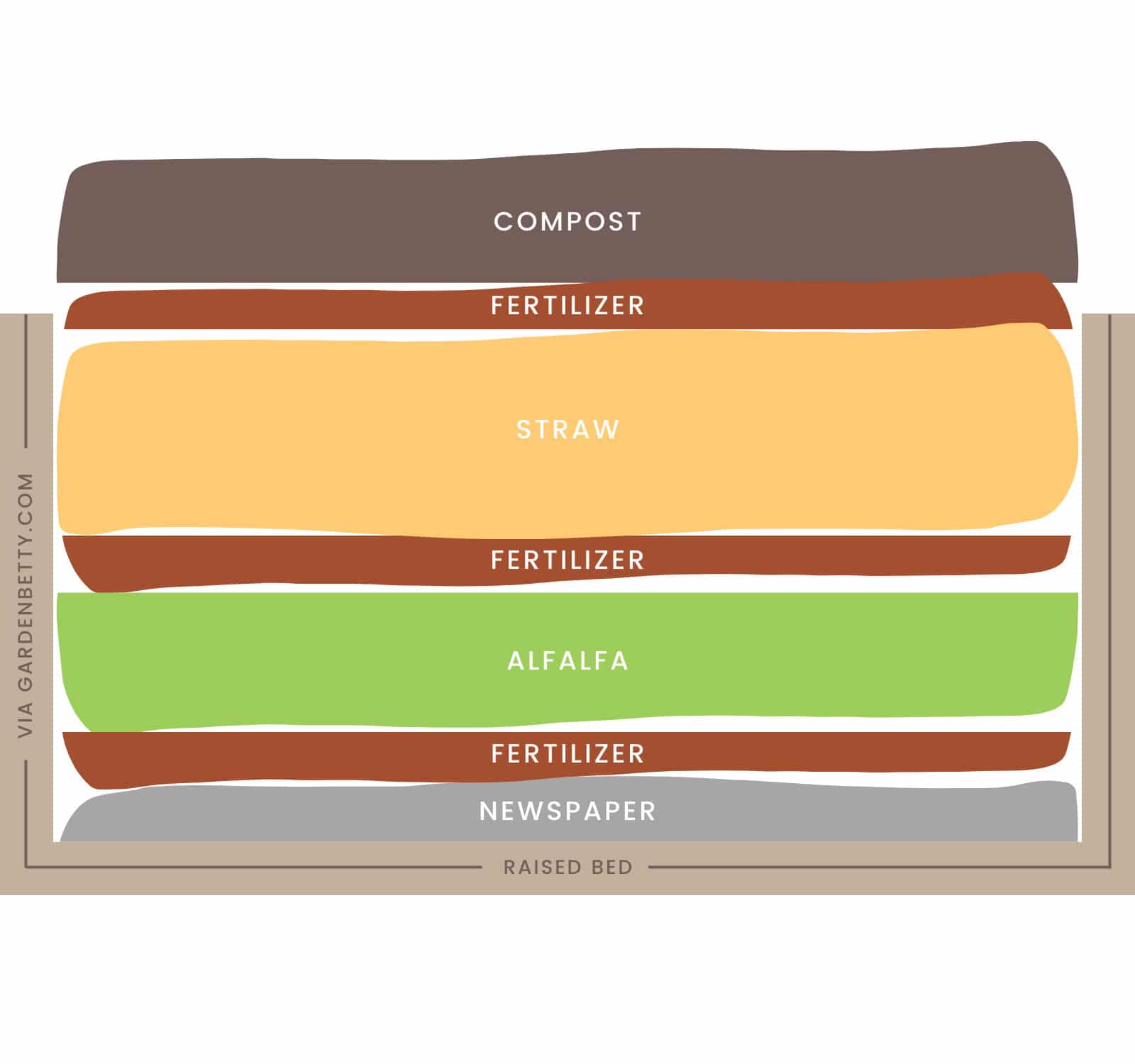
I decided to try this method for filling my clawfoot tub, since straw and alfalfa were inexpensive and easy to come by at my local feed store, and I could use them to mulch and amend several other beds in the garden.
Materials needed
- Newspapers
- Organic fertilizer (I used blood meal and bone meal)
- Alfalfa (also called lucerne hay)
- Straw (make sure it’s weed- and pesticide-free)
- Finished compost
How to make a no-dig garden bed
I started with about 10 sheets of newspaper layered in the bottom of the tub. In my case, they were less for weed suppression, and more for adding brown matter and providing food for the worms that will make their home in the tub.
Next came a generous dusting of fertilizer—I went with a combination of blood meal and bone meal, but chicken manure, rabbit manure, or any high-nitrogen organic fertilizer would work. Rather than following the suggested application on the packages, I tossed in a few handfuls of each, then watered them in well.
(A few handfuls is much more than you would typically use if you were fertilizing a bed, but in this case, extra blood meal and bone meal is added to accelerate the breakdown of the layers.)
Then came the alfalfa. Alfalfa (also called lucerne hay) is the same stuff used as horse feed. It comes in bales that pull apart in 3-inch pads and makes an excellent base for a no-dig garden.
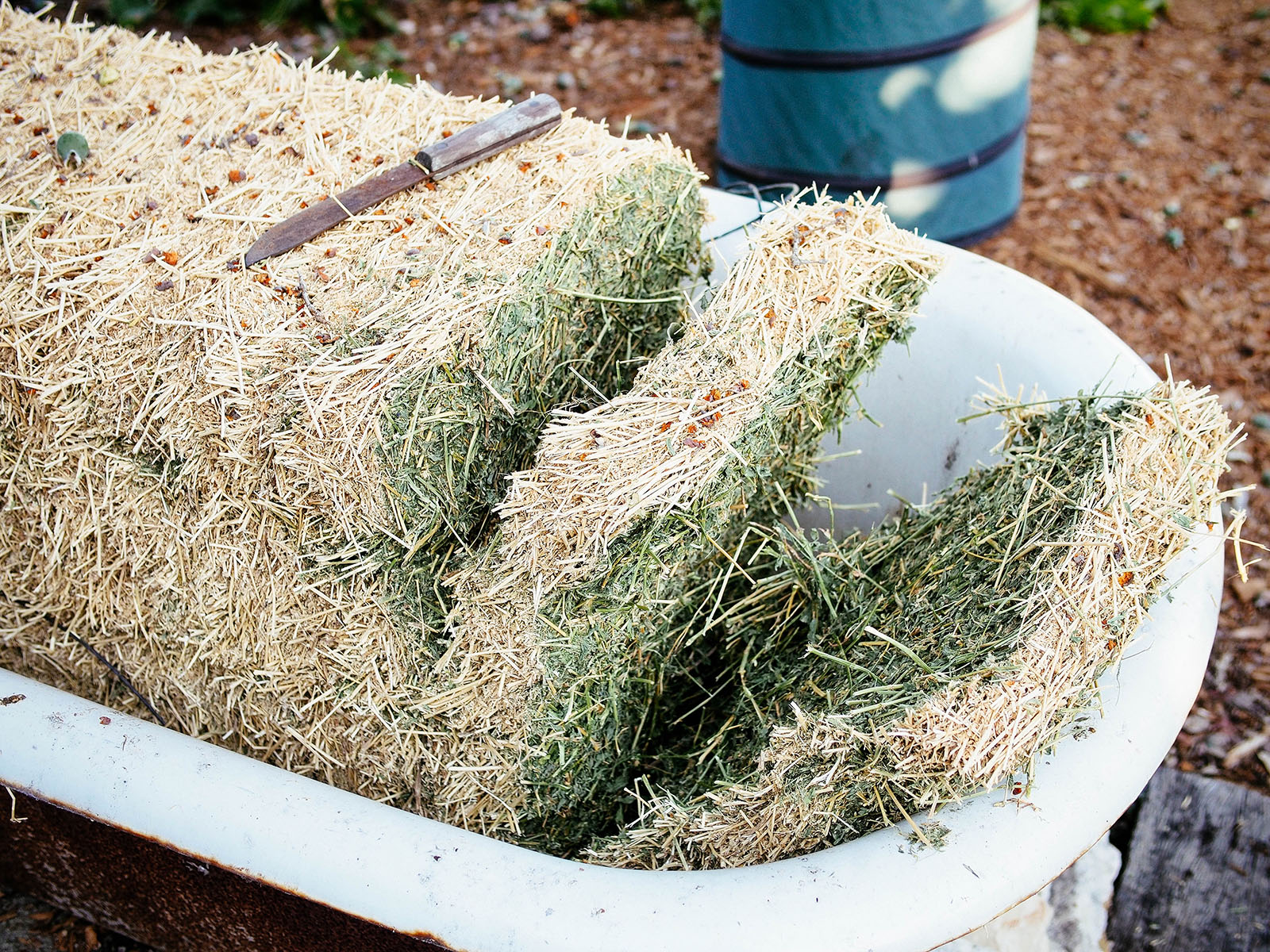
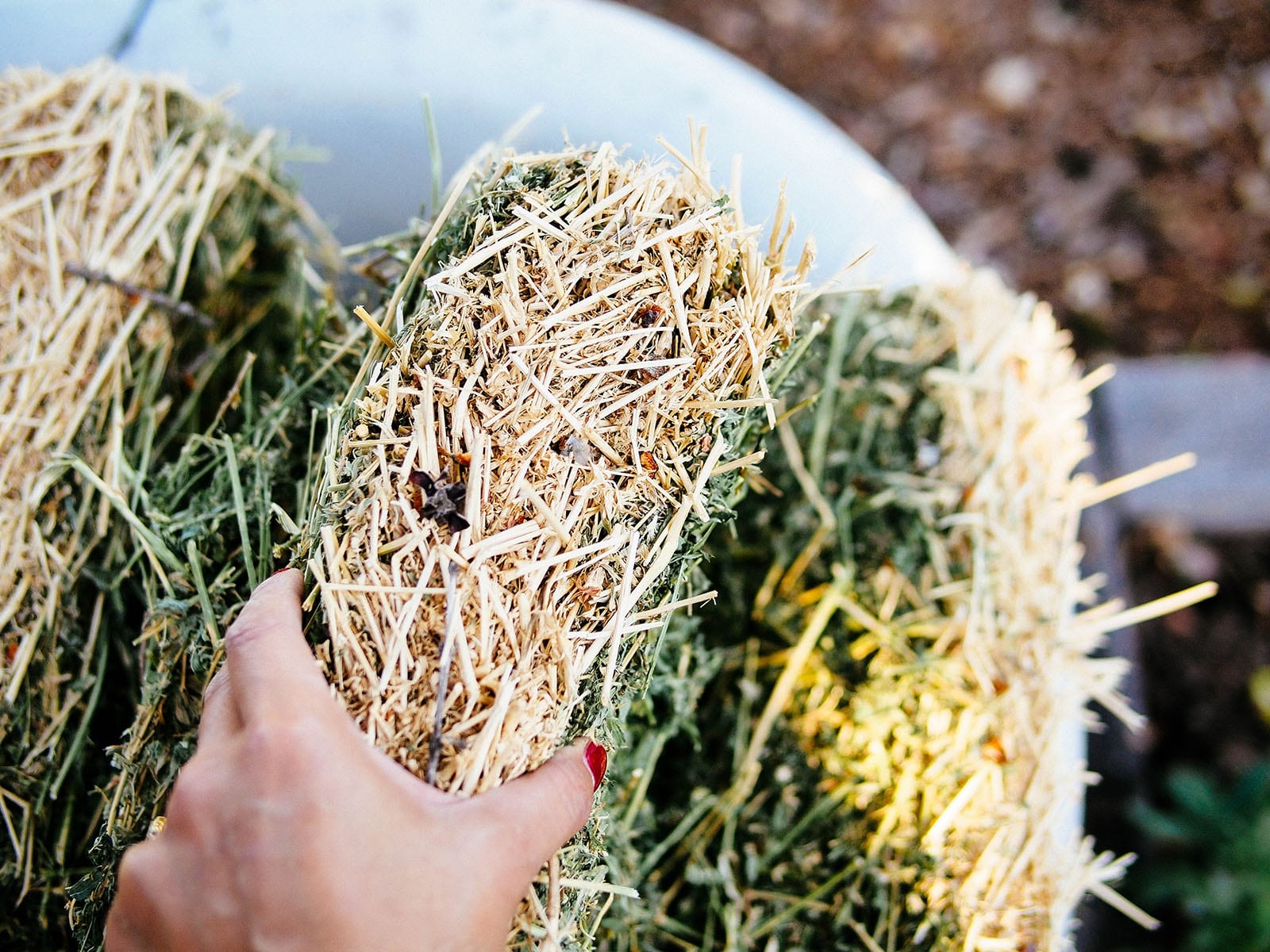
With its super nutritious and high nitrogen content, it rots quickly, providing rich organic matter for plants and helping other materials decompose. I covered the bottom of my tub with two layers of alfalfa pads (about 6 inches), a few more handfuls of bone meal and blood meal, then soaked them thoroughly with a hose.
On top of the alfalfa, I added a thick layer of straw (about 12 inches, or double my alfalfa layer). Straw is basically hay without the grains; it’s the hollow stems and dried leaves left behind after all the grains and seeds have been harvested.
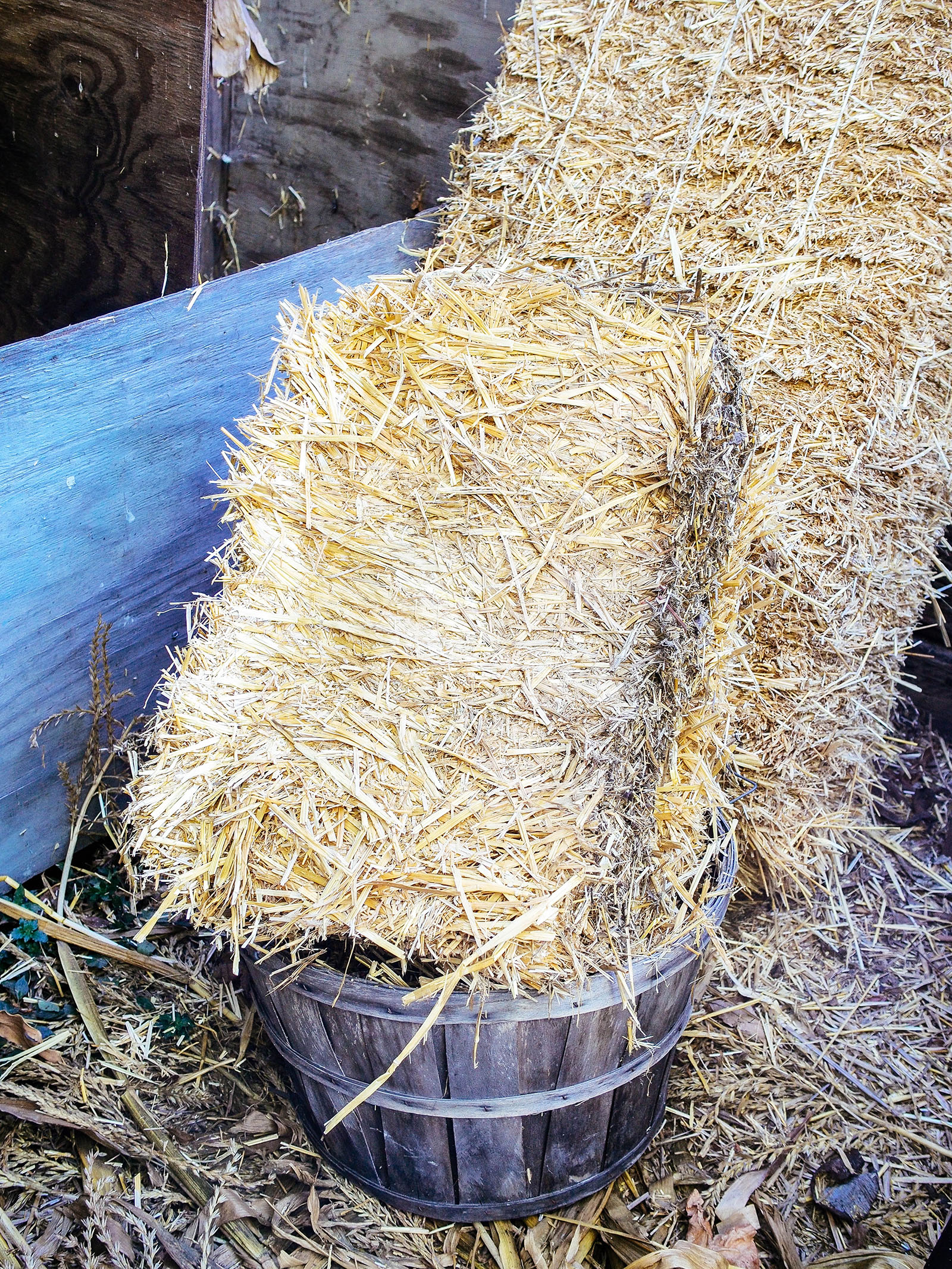
It’s not as nitrogen-rich as alfalfa, but breaks down quickly into compost and contains fewer seeds, meaning less weeds growing in your no-dig bed. Really pack in and pack down the straw in your raised bed (even building the layer up to the lip), as it will greatly compress after a couple of months.
Following the straw was another generous dusting of blood meal and bone meal, and another soak with the hose.
Finally, the topmost layer was a healthy addition of compost (about 3 to 6 inches). Whatever you use, it should be well rotted and teeming with microbes. This is the layer you’ll be seeding and planting in, so don’t skimp on the compost. Wet it down, and you’re ready to plant!
In a standard-depth raised bed, the ratio of layers would look like this from the bottom up:
- 10 sheets of newspaper
- 3 inches of alfalfa
- 6 inches of straw
- 3 to 6 inches of compost (or well-amended topsoil)
Scatter blood meal and bone meal over each layer and saturate with water before adding the next layer. It might seem like you’re piling on a mountain of materials, but the alfalfa and straw will compress under repeated watering and reduce to about half their height by the end of the season.
If you have a taller raised bed, simply repeat the layers until you reach the top (ending with the compost layer).
Reviving an old garden bed
The no-dig gardening method also works for reviving an old raised bed; just omit the straw layer and add the rest on top of the existing soil.
I had a garden bed sit neglected, empty, and dry for a few months, and its soil had turned into heavy, compacted earth. I stacked on the newspaper, blood and bone meal, alfalfa, more blood and bone meal, then topped off with homemade compost, and saturated each layer with water.
I didn’t plant in that particular bed, but watered it with the rest of the garden through winter and ended up with lush, rich soil to plant in spring as all the layers gradually decomposed into humus.
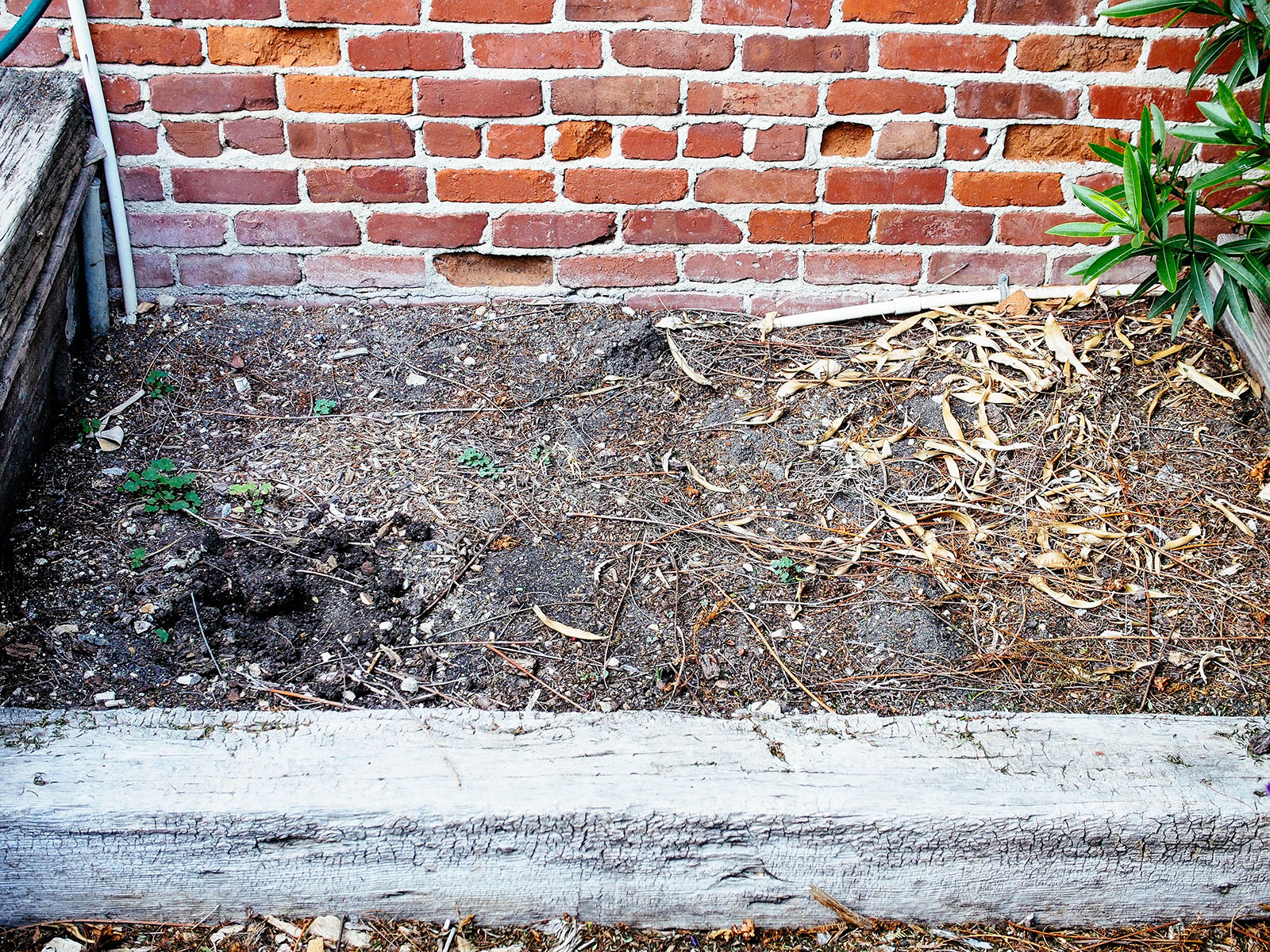
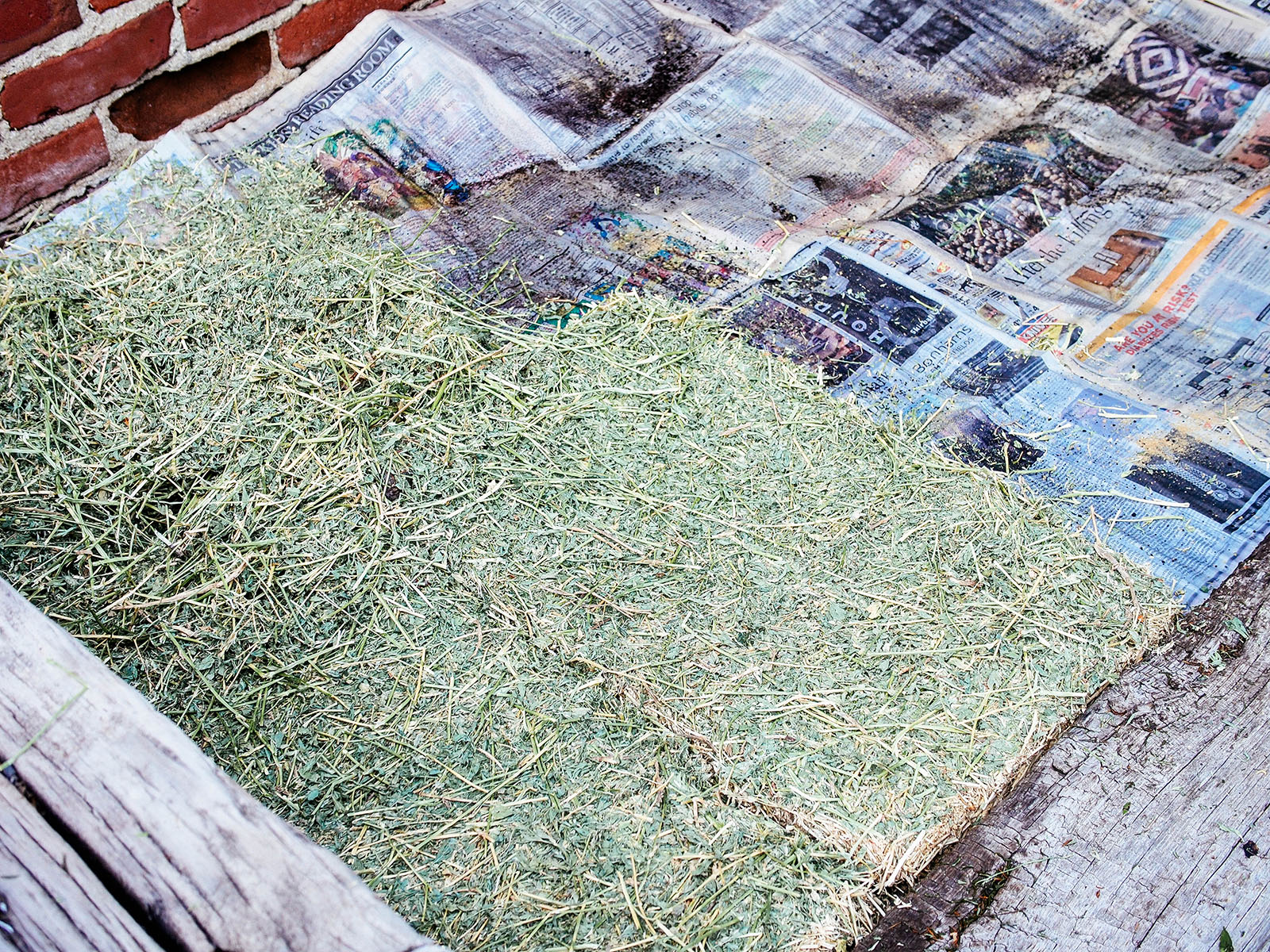
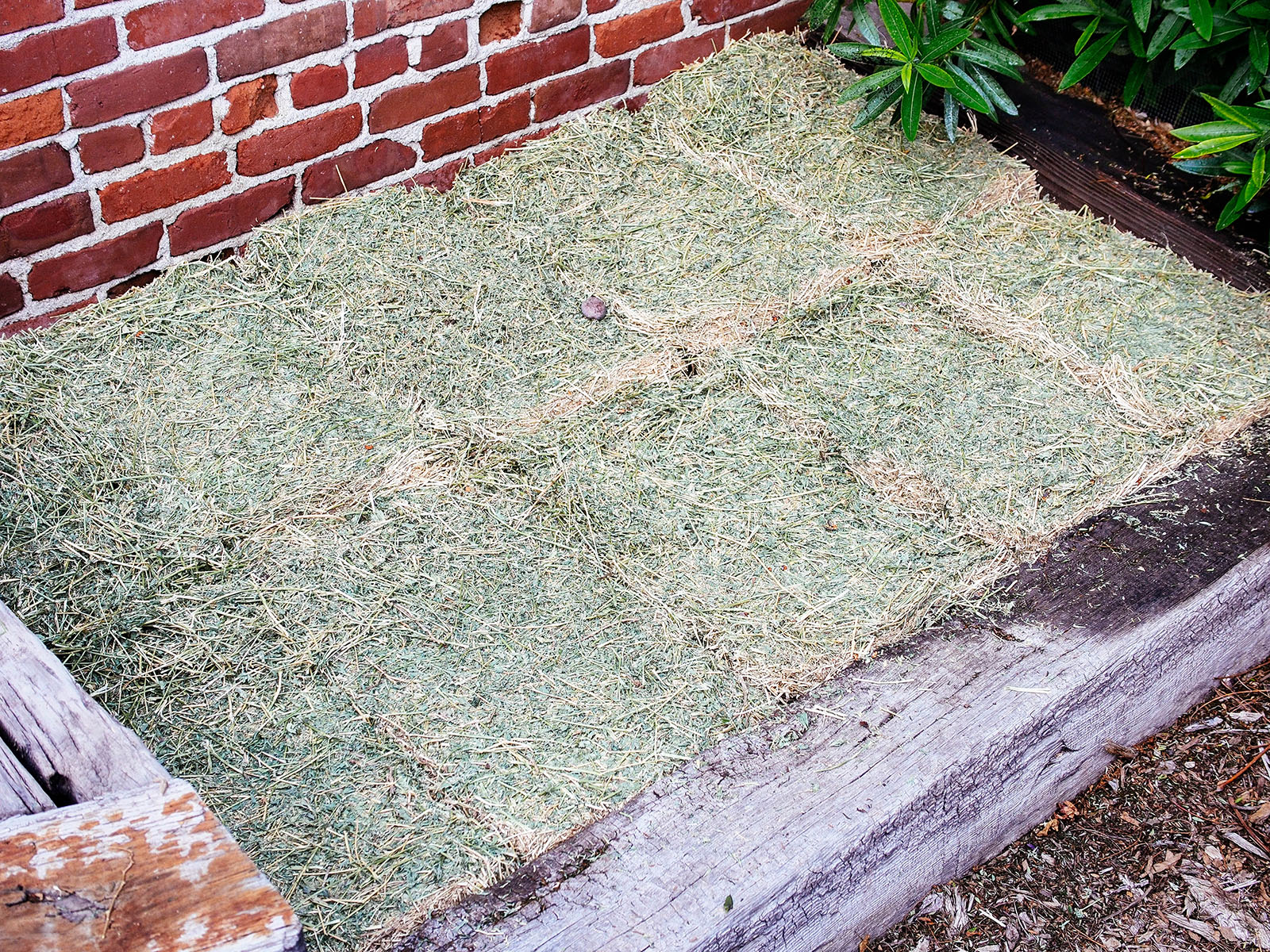

How to maintain a no-dig garden
Going back to the bathtub, this is what it looked like shortly after I piled on all the layers, then planted the top layer with kale, turnip, and lettuce.
I started everything from seed and they sprouted within a week. I watered like normal and did not fertilize the bed again until mid-season.
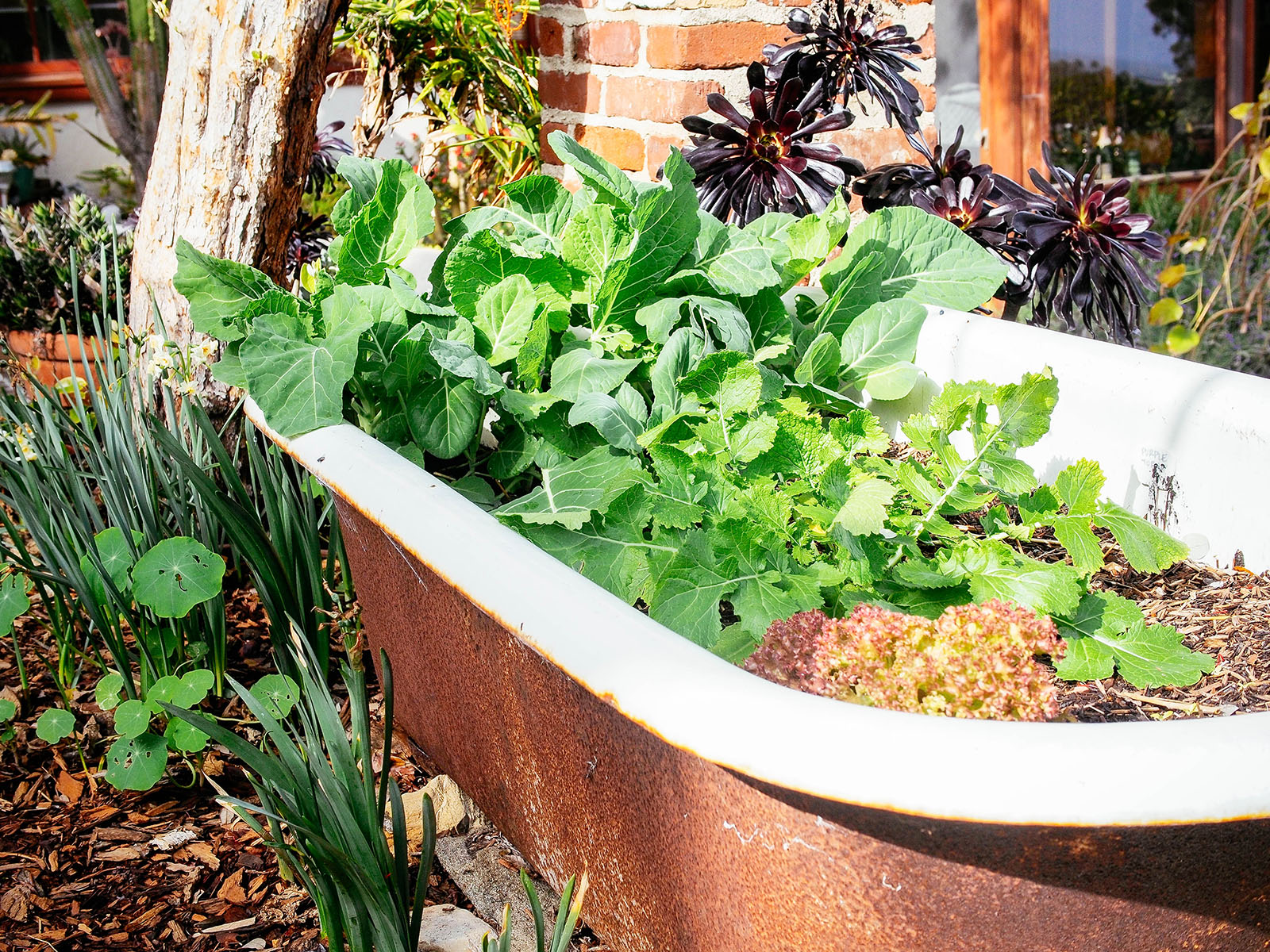
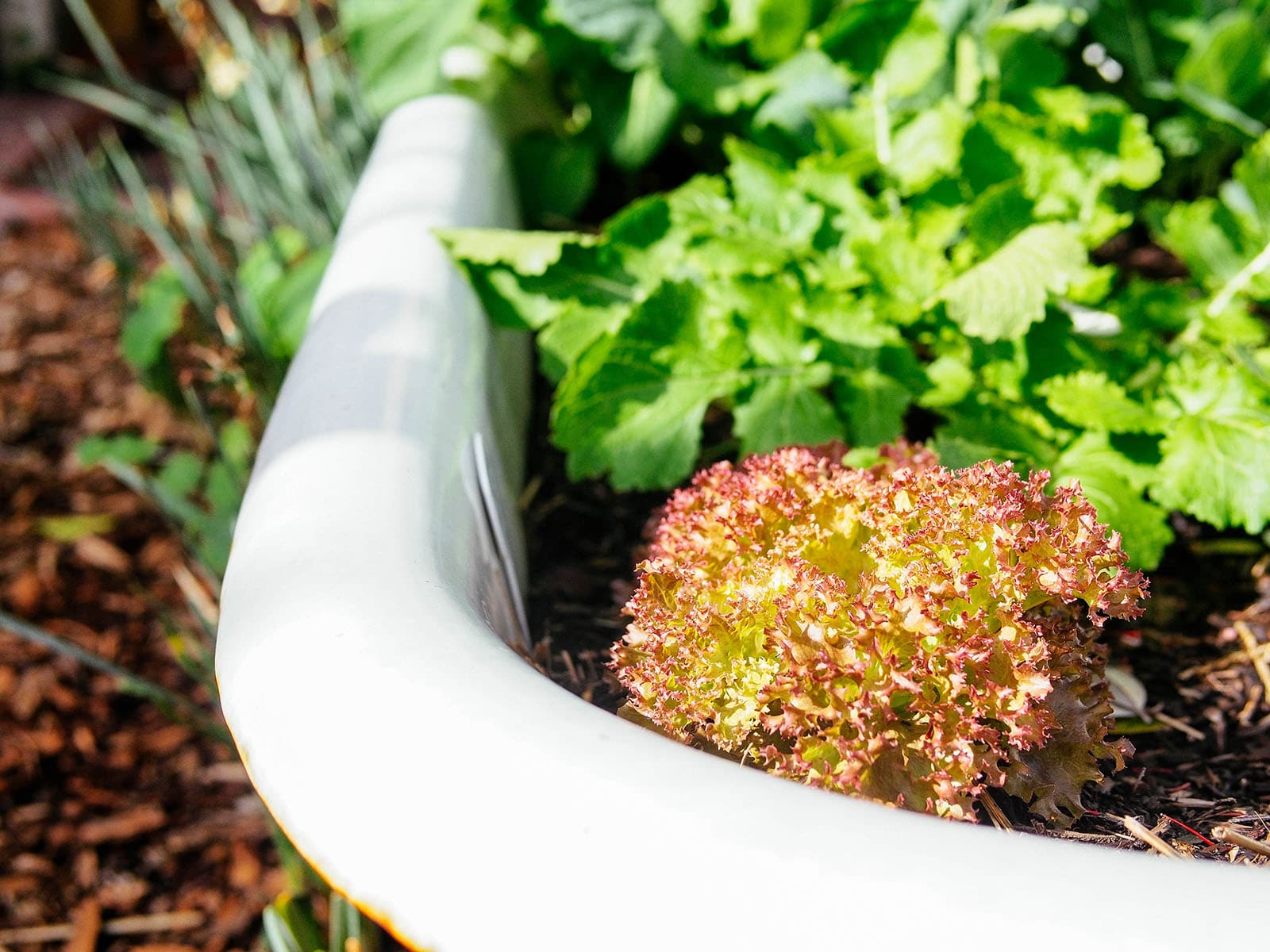
Some sources suggest that newly built no-dig beds work best with shallow-rooted plants until the layers break down into humus. But from experience, my turnips (shown here in the foreground) grew well, as did many other root crops and medium-rooted plants I’ve grown.
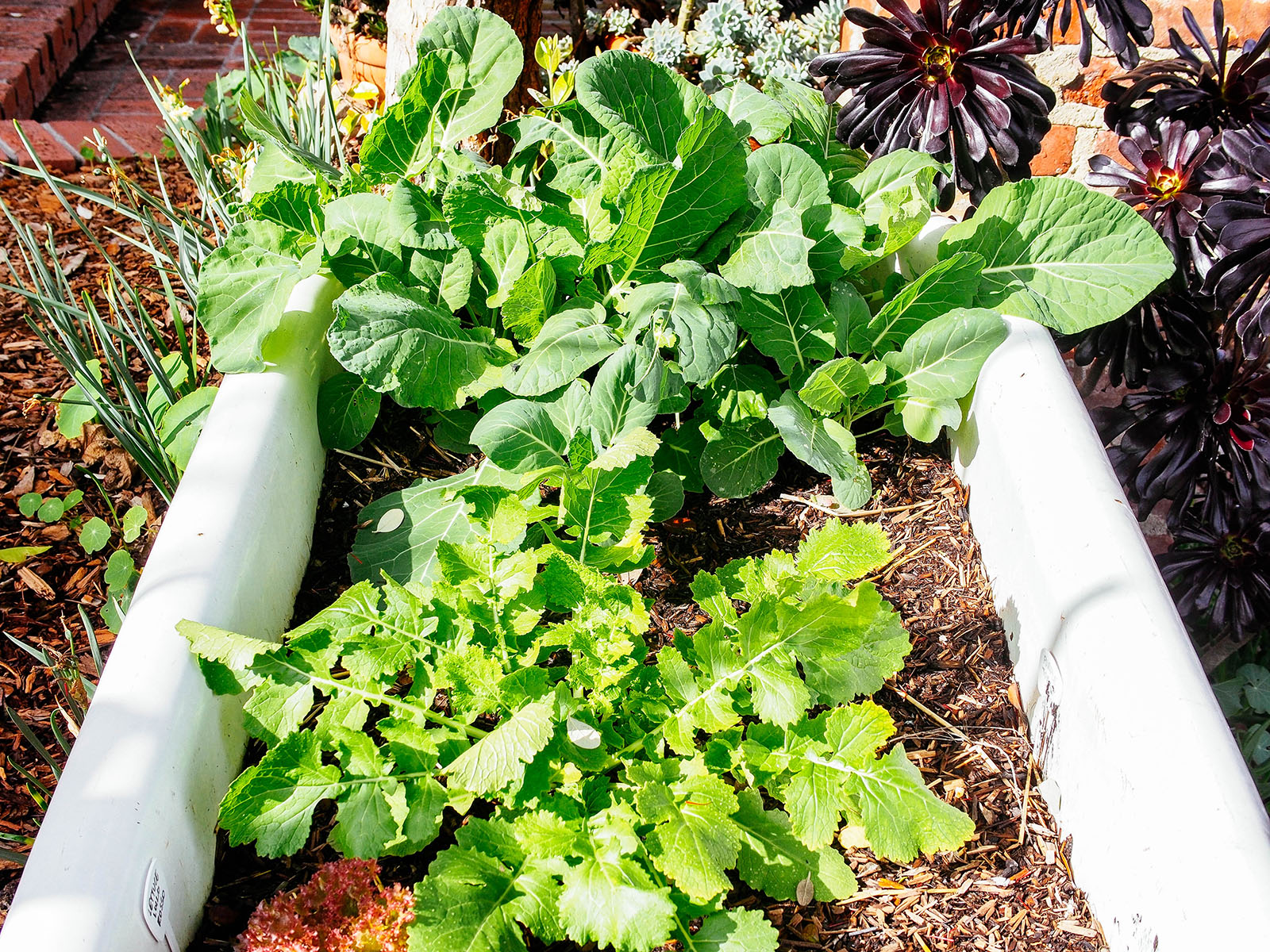
I probably wouldn’t plant, say, Imperator carrots or Japanese daikon in a first-season bed as they’re very deep-rooted (upwards of 10 inches long) and do best in deep soil. But if you have the space to experiment? I say go for it!
Like any raised bed, you should top off your no-dig bed every season with compost and mulch. These are the layers that keep the soil food web fully functioning and healthy. I aim for 2 to 3 inches of compost, then another 2 to 3 inches of mulch (like straw, shredded leaves, or pine needles) on top of that.
Remember, there’s no need to turn the soil over or work the ingredients into the soil. They just sit on top and get watered in normally. (But be sure to keep the mulch a few inches away from the base of your plants—you don’t want it to hold moisture against the stems, which will lead to rot.)
This no-dig bed is now one of my favorite “lazy gardening” strategies that I’ve used and adapted in a few different gardens, as it’s easy to implement (even in small spaces) and doesn’t require me to stockpile a ton of organic matter (like vegetable scraps) to put into a bed.
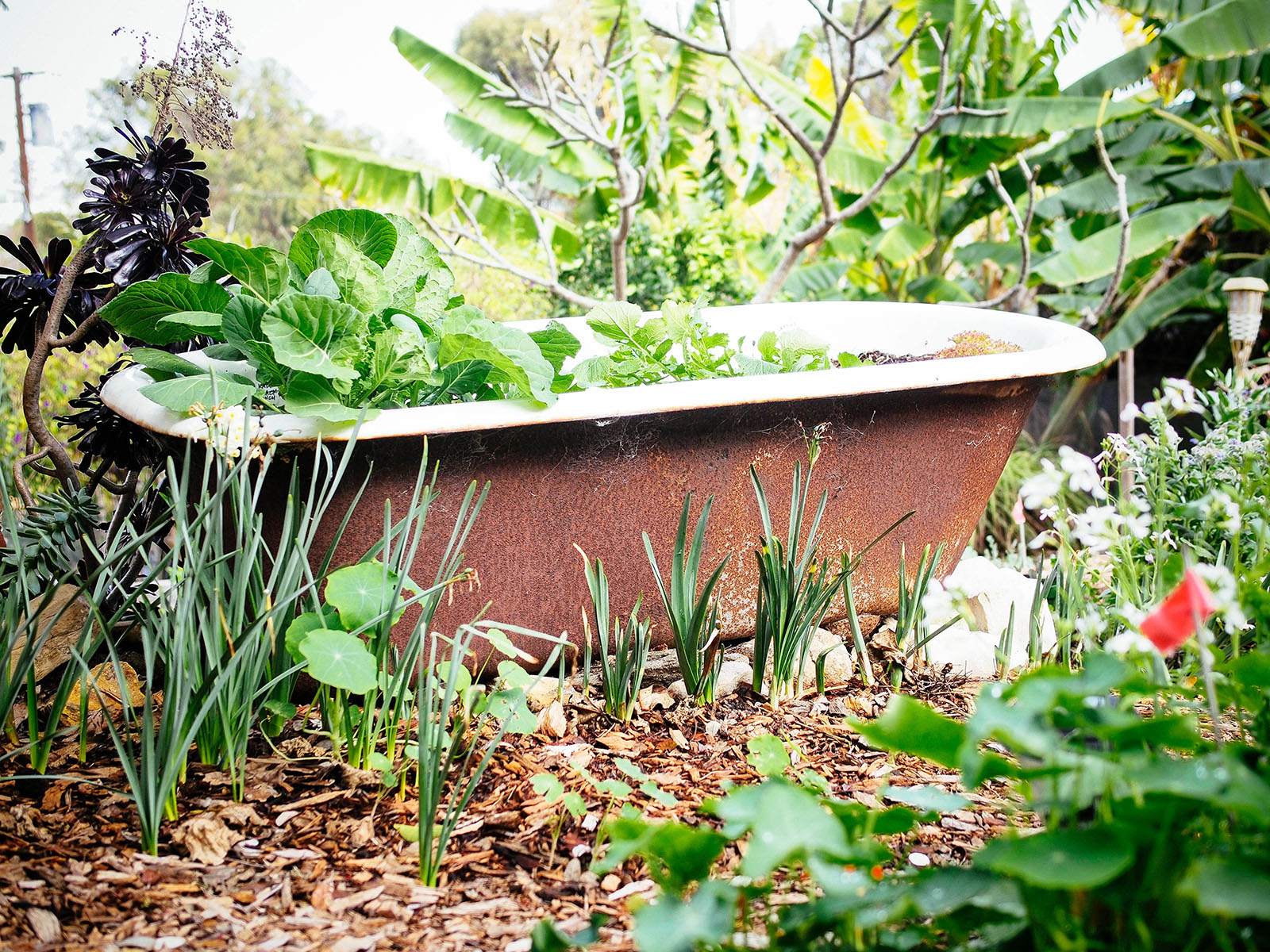
Frequently asked questions
Easy No-Dig Garden Bed
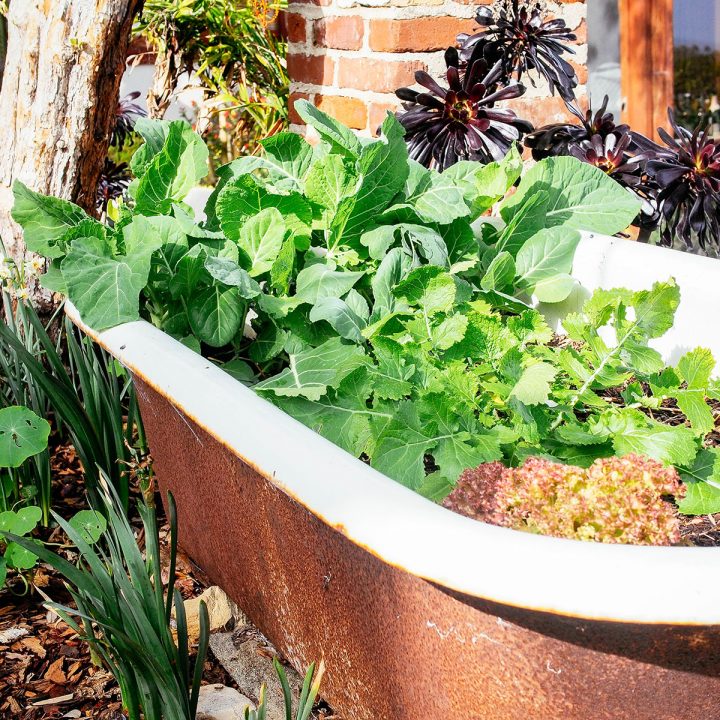
Put down that shovel and start making healthy soil the lazy way by building a no-dig garden bed. This low-effort, no-till method yields healthier plants and fewer weeds, and your back will thank you for it.
Materials
- Newspapers
- Organic fertilizer (I used blood meal and bone meal)
- Alfalfa (also called lucerne hay)
- Straw (make sure it's weed- and pesticide-free)
- Finished compost
Tools
- Trowel
Instructions
- Lay 10 sheets of newspaper across the bottom of the garden bed.
- Scatter a few handfuls of fertilizer over the newspapers.
- Layer about 6 inches of alfalfa on top.
- Scatter a few more handfuls of fertilizer over the alfalfa, then water thoroughly.
- Add about 12 inches of straw over the alfalfa.
- Scatter a few handfuls of fertilizer over the straw, then water thoroughly.
- Top off with 3 to 6 inches of finished compost, and water thoroughly.
- Now, you're ready to plant!
Notes
If you have a taller raised bed, simply repeat the layers until you reach the top (ending with the compost layer).
This post updated from an article that originally appeared on March 5, 2014.


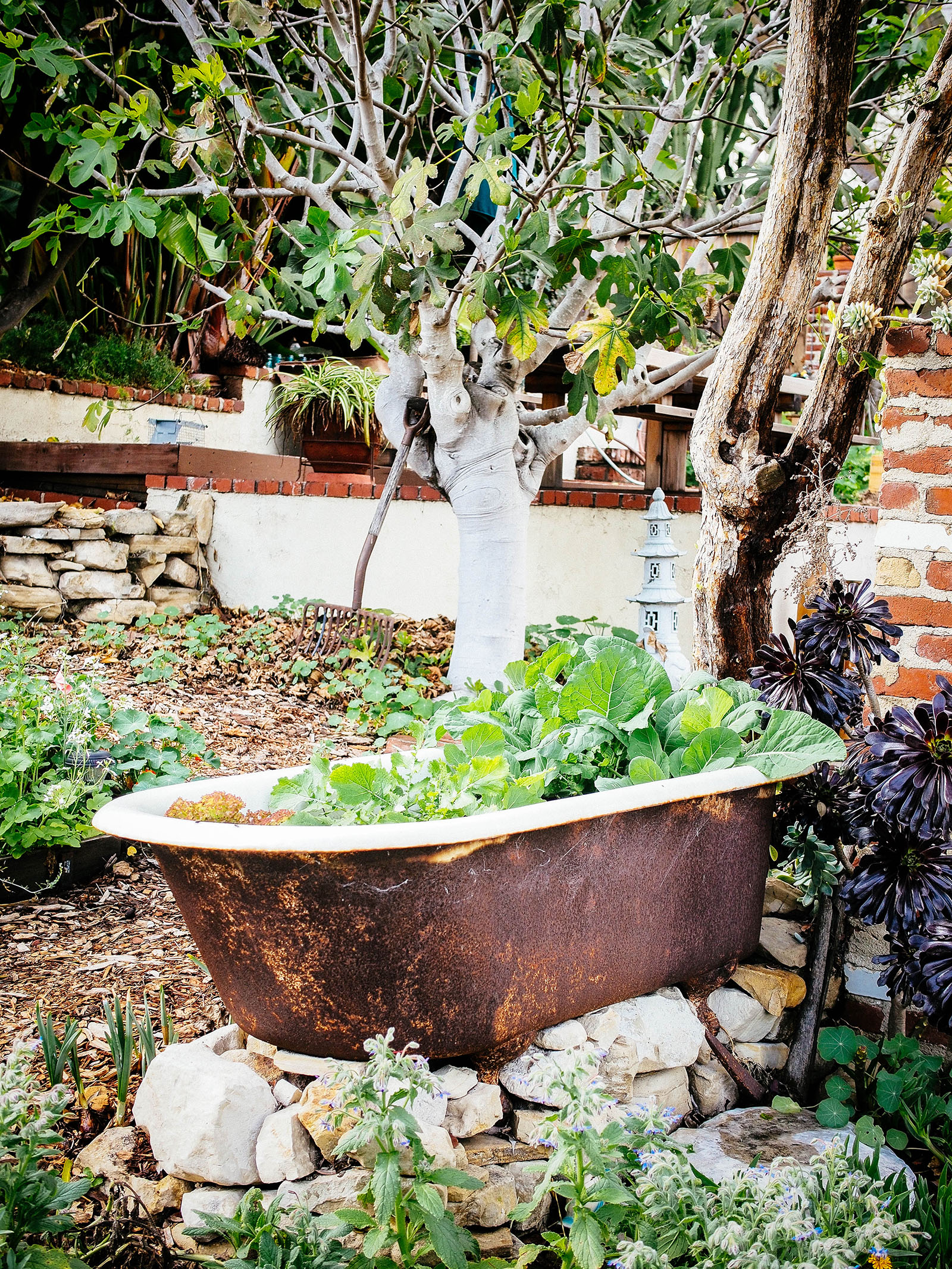













RT @theGardenBetty: Start a compost-rich garden bed without breaking your back: The No-Dig Vegetable Garden http://t.co/4LrXM2Gs2y < TY for…
Start a compost-rich garden bed without breaking your back: The No-Dig Vegetable Garden http://t.co/4LrXM2Gs2y < TY for RT! @vintagefuchsia
RT @theGardenBetty: I gave this intriguing method a try and 4 months later, it’s a success! The No-Dig Vegetable Garden http://t.co/Du2TcQT…
I gave this intriguing method a try and 4 months later, it’s a success! The No-Dig Vegetable Garden http://t.co/Du2TcQTXV6 #gardenchat
RT @BG_garden: The No-Dig Vegetable Garden: I started a new garden bed last fall, and I didn’t dig a thing. It actually would… http://t.c…
Steve Elias liked this on Facebook.
A great alternative for filling a deep bed with less expense and less work. The No-Dig Vegetable Garden http://t.co/VFx3B1IPYQ #gardenchat
Love the tub! MT @theGardenBetty: Beautiful garden without breaking your back. No-Dig Vegetable Garden http://t.co/mS2jCMfGlg #gardenchat
A beautiful garden bed without breaking your back. It’s possible! The No-Dig Vegetable Garden http://t.co/qSpmPr2XsW #gardenchat
RT @theGardenBetty: How to start a compost-rich garden bed without breaking your back: The No-Dig Vegetable Garden http://t.co/4LrXM2Gs2y #…
RT @theGardenBetty: How to start a compost-rich garden bed without breaking your back: The No-Dig Vegetable Garden http://t.co/4LrXM2Gs2y #…
Georgette Howington liked this on Facebook.
RT @theGardenBetty: I took on a new #garden project last fall and 4 months later, the no-dig bed is thriving: The No-Dig Vegetable Garden h…
I took on a new #garden project last fall and 4 months later, the no-dig bed is thriving: The No-Dig Vegetable Garden http://t.co/7TvXREO84A
Last spring was my very first attempt at veggie gardening, and I am a huge believer in no-till gardening. I am glad to see this post because every time I say “no till” to anyone who gardens they look at my like I am talking about something they should understand, but don’t; like the velocity of money in an economy or something.
I might be inclined to try something like this (if I had the tub) using small tree branches instead of newspaper as the base layer, ala hugelkultur to some extent. Not only does the wood become a sponge reducing the need for water, but it acts as a nitrogen sink, releasing nitrogen back into the growing medium as it decomposes.
Keep posting, you are an inspiration!
Thank you Tsuri!
Savannah Zendejas liked this on Facebook.
Don Eddy liked this on Facebook.
The Park Wife liked this on Facebook.
Kami Nahar liked this on Facebook.
That was a very informative post.. Thanks. Is the drainage in the tub sufficient esp. When it rains?
The tub still has its original drain hole and the soil created in the tub is very light and well draining. We had several inches of rain recently and the bed held up fine – no waterlogged plants. However, I can’t speak for other areas of the country where it might rain every day and see little sun.
RT @theGardenBetty: How to start a compost-rich garden bed without breaking your back: The No-Dig Vegetable Garden http://t.co/4LrXM2Gs2y #…
How to start a compost-rich garden bed without breaking your back: The No-Dig Vegetable Garden http://t.co/4LrXM2Gs2y #gardenchat #gardening
What a fantastic post! This is a great idea for someone with minimal green space or super rocky soil. I love it! Thank you so much for sharing your tips too!
Absolutely!
Love this – BUT – sure wish I could find the links to send you from a series of articles I read a couple of years ago on how to create a backyard soaking tub from castoff clawfoots! So simple but charming indeed! You could even make matching ones for you & your Mr.!
I love that idea, but that part of the yard is not as private as one might think! Our neighbors would have a ball watching us soak in the clawfoot. LOL! (I originally wanted to do an outdoor shower/tub when I first moved in. Luckily, we still have a hot tub in the lower yard.)
Liz Jones liked this on Facebook.
Eve Helmer liked this on Facebook.
Eddie Hsieh liked this on Facebook.
Randall S. Winkler liked this on Facebook.
Bonnie Miller liked this on Facebook.
Betty Davis liked this on Facebook.
Shared.
Sven Pihl liked this on Facebook.
RT @gagasgarden: The No-Dig Vegetable Garden | Hay Bale Garden http://t.co/NTUMwh5zlB #gardening #gardens
The No-Dig Vegetable Garden | Hay Bale Garden http://t.co/NTUMwh5zlB #gardening #gardens
Linday,
Last year I was thinking of putting in a garden like this called a hay bale garden because you can put it on the deck or close to the house and here by the woods then you don’t have to worry about deer and raccoons as much eating your vegetables. 🙂 That’s another big advantage. Thanks for the wonderful easy instructions. I am looking forward to meeting you in May at P. Allen Smiths.
Sincerely,
Susan Fox
Unless the bale of hay is VERY well-rotted, I don’t think you’d want it as a basis for a garden, as all those hayseeds will enthusiastically sprout and give you lots of lovely….grass!
I did quite a bit of research into straw bale gardens when I first heard about them a couple of years ago, and while I like the idea of them, they use A LOT of water in order to rot down the straw. (They also take a few weeks to get going, whereas this method can be planted right away.) Straw bales are ideal for places with access to plenty of water, or for yards where the soil is contaminated and you can’t start a raised bed on top of it, but unrealistic for the desert environment here.
Look forward to meeting you too. 🙂
Andrea Cardin Hughey liked this on Facebook.
April Stacey liked this on Facebook.
RT @BG_garden: The No-Dig Vegetable Garden: I started a new garden bed last fall, and I didn’t dig a thing. It actually would… http://t.c…
RT @BG_garden: The No-Dig Vegetable Garden: I started a new garden bed last fall, and I didn’t dig a thing. It actually would… http://t.c…
The No-Dig Vegetable Garden: I started a new garden bed last fall, and I didn’t dig a thing. It actually would… http://t.co/2QsLIwiu17